Proto-PSU kit
Description and specs
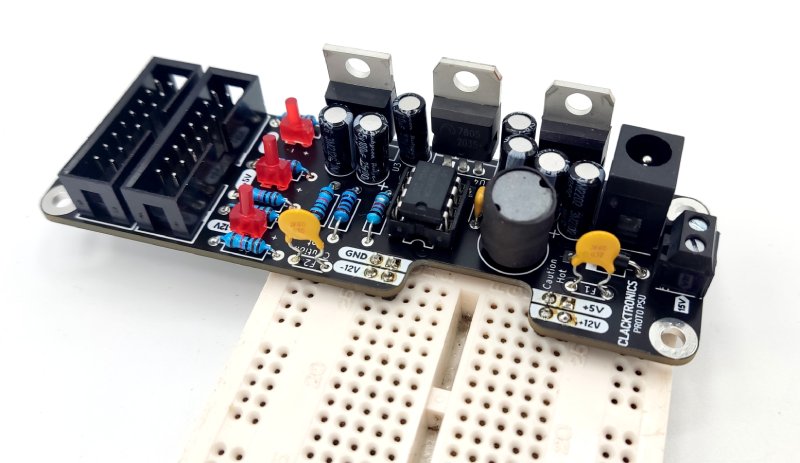
Proto PSU is an easy to assemble DIY kit that is designed to make it easier and cheaper to have a dual rail power supply typical of DIY synth for prototyping purposes. Its 4 layer PCB design uses through hole components that are clear and easy to solder. It is versatile, it can either be a breadboard attached supply, an internal case supply or a module style power supply depending on how you configure it. There is no need for a specialist AC supply or to use mains electricity, it runs off a 15VDC adaptor. It comes with two resistors for R1 so you can either keep the PSU cool at a limited 80mA for -12V or drive it a little harder keeping an eye on how hot it gets. I reccomend keeping to 1Ω for R1 and then replacing it with the smaller resistor if you need more
Take care!This module uses no dangerous parts but if not built properly or is over driven very slightly it will get very hot and burn your fingers. Make sure the core components are all properly installed in the right place and polarities are correct. The polyfuses are for protecting against shorts but not for over currents, if for example the -12V rail is driven over 100mA but below 500mA the MC34063 will get very hot and so will the 7912 regulator.
- Width: 6HP
- Height: 3U
- Depth: 50mm
- 12V and 5V shared current : 300mA
- -12V : 80mA
- 100mV ripple
Caveats and warnings
It is not only called “proto” because it is for prototyping but also because it is just a test PSU you use before you attach your design to a bigger nicer one. There are a few limitations that you need to be aware of just so it meets your expectations.
- Current is limited to 80mA for -12V (if using 1Ω for R1) and 300mA for both 5/12V. The polyfuses will blow if this is greatly exceeded (a short), don’t worry they will reset.
- If you use the 0.22Ω resistor be cautious that there is a gap between the MCP34063 and LM7912 getting really hot and the polyfuse actually blowing. This is why the 1Ω is reccomended
- The switching supply IC MCP34063 is supposedly an 80s design, that's how it was possible to get a DIP-8 part, it is probably the closest to a jellybean DC converter you can get. It switches at approximately 100kHz which will be audible at higher loads near 100mA of the -12V rail. You must follow some good design practices (that you should be doing anyway!) such as not directly connecting voltage references to the rail. For example with op-amps when you need an offset voltage or pot reference. Or you might not give a damn as you are hacking away!
- The nature of polyfuses means that if you only slightly exceed the 300mA current the fuse might not open completely, it could cause the voltage to droop but not go low, this may cause frustration if you are unaware, keep measuring rails. Also if using the 1Ω resistor the -12V rail will just drop (I guess rise as its negative!) in volts the more you go above 80mA this keeps the device very cool but could also confuse you if you are looking at a design.
- When using it in eurorack module configuration take care to notice that the tag of the regulators are bare and may touch something.
- Another issue with the polyfuses is they have a resistance, any circuit that pulls power in pulses will make the line noisy, if this is an issue either short them or remedy with a capacitor.
Bill of Materials
| Part | Value | Designators | Notes |
|---|---|---|---|
| Capacitor electrolytic | 100μF | C1, C3, C4, C5 | pin pitch 2mm |
| Capacitor electrolytic | 10μF | C6, C7, C9 | pin pitch 2mm |
| Capacitor ceramic | 220pF | C2 | pin pitch 5mm NPO/C0G |
| Schottky diode | 1N5819 | D1, D2 | DO-41 footprint |
| 2mm Red LED | 2mm package | D3, D4, D5 | Front or back placement |
| Polyfuse 300mA | JK60-030 | F1, F2 | 3mm LED footprint |
| Power Inductor | 220uH | L1 | pin pitch 5mm |
| Resistor | 1Ω for 80mA limit on -12V rail or 0.22Ω for 300mA | R1 | 1/4W resistor it is sub 1Ω! |
| Resistor | 11KΩ | R2, R4, R5, R6, R7, R8 | 1/4W resistor |
| Resistor | 1KΩ | R3 | 1/4W resistor |
| Inverter IC | MCP34063 | U1 | Inverting switch supply |
| Regulator | LM7812 | U2 | 12V Linear Regulator |
| Regulator | LM7912 | U3 | -12V Linear Regulator |
| Regulator | LM7805 | U4 | 5V Linear Regulator |
| DC barrel socket | 2.1mm | J1 | Front or back placement |
| Eurorack power | 2x8 IDC socket | J2, J3 | Take care orientation |
| Srew terminal | 2 pin screw terminal | J5 | pitch 5mm |
| Breadboard hearder | 2x2 pin header | J6, J7 | place in breadboard to solder |
| Pillars | M3 x 12mm | 4 pcs | For panel version only |
| Black screws | M3 x 6mm | 10 pcs | For pillars and rack mounting |
| PCBs | Black 1.6mm | 2 pcs | Main PCB and panel (optional) |
Assembly Video
Assembly
The assembly instructions are shown for the complete kit that is for sale. If you source your own components the parts may look different. Sometimes it is hard to convey in text and image the exact details of assembly so some information may be a bit confusing especially if you are starting out. A video is also available that may be more helpful to follow along.
Components in bag
You should have the following components
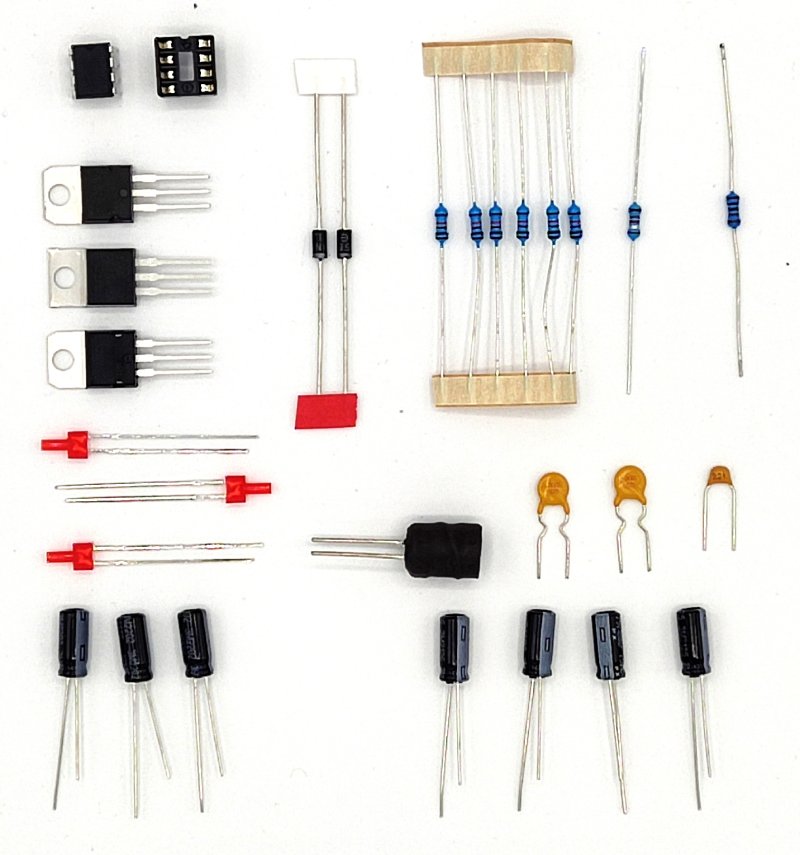
Hardware
All the hardware, PCB and panel
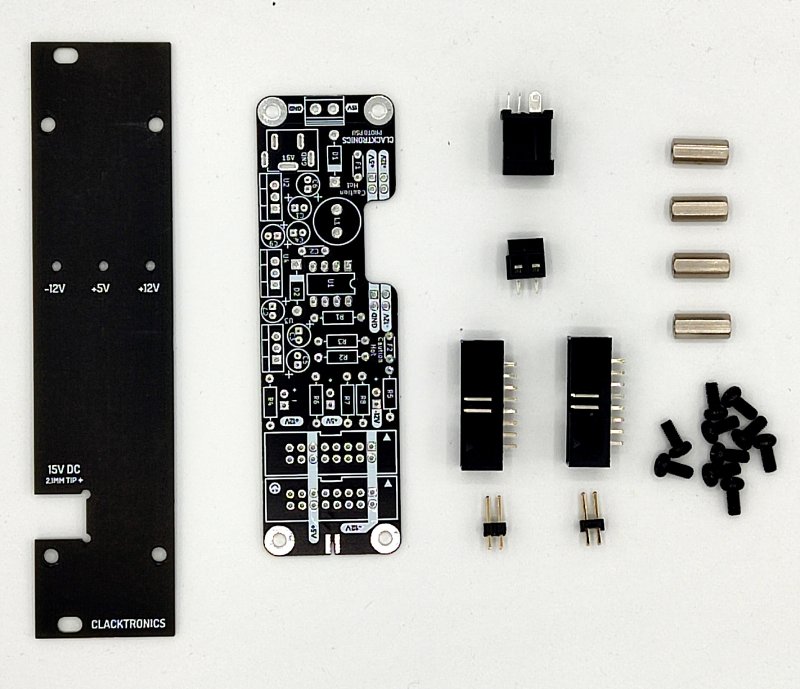
01 Mount Capacitors
Make sure you get them the right way around, also note there is 100uF and 10uF get them in the right palce.

02 Mount resistors
Next resistors, note the colour values, if you are unsure use a multimeter to check the values.
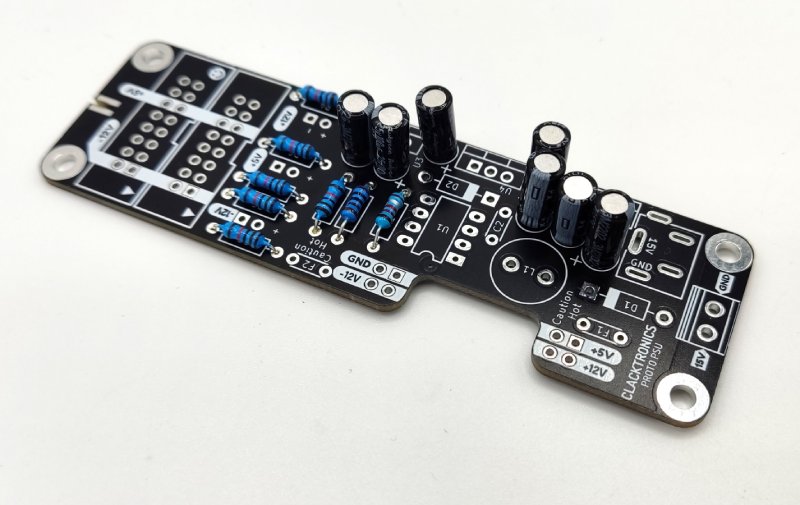
03 Diodes and fuses
Diodes are polarised, stripe goes to stripe on the PCB, fuses are not polarised and can go either way around.
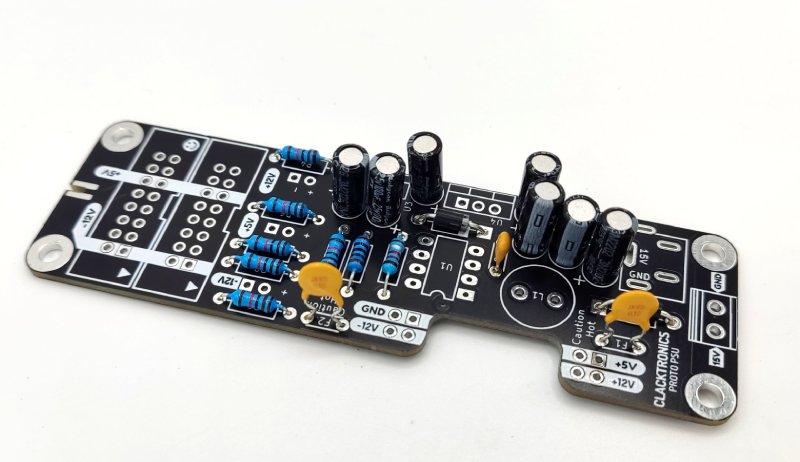
04 Inductor and regulators
There are three regulators, make sure you put the right ones in the right places, there is 7805, 7915 and 7805.
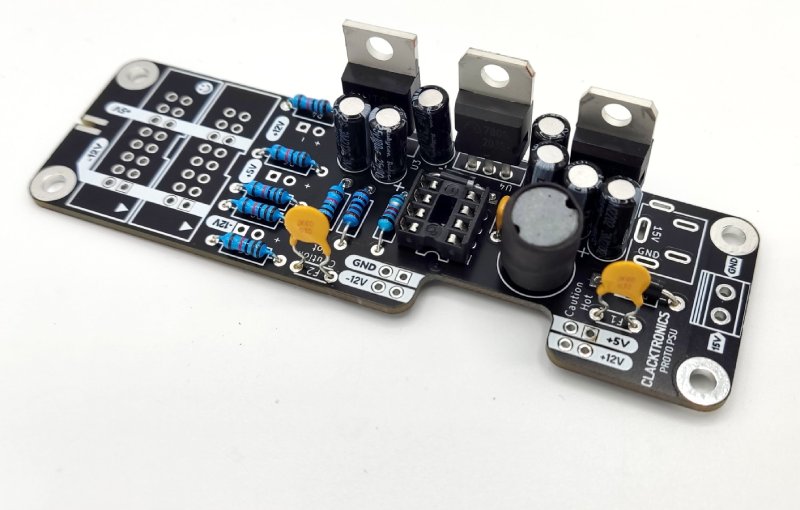
05 conenctors and terminal
Hold the connectors in with a ball of blue tack or your hand and tack it in palce with a blob of solder on your iron to make sure it is all in place before commiting to soldering all the pins.
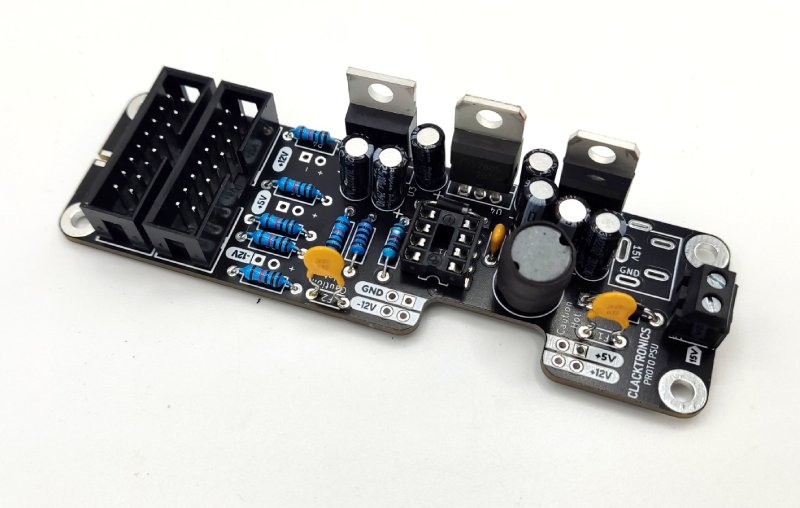
Wait stop! now the assembly diverges depending on how you want it built.
Go to 6A to build the breadboard version and 6B to complete it as a panel version
Wait stop! now the assembly diverges depending on how you want it built.
06A Fit socket and LED

07A breadboard version Finished!

06B Add spacers
Screw in the spacers to the PCB, we want to attach the panel first, so the panel dependant components will fit nicely. Solder in the LED at the height you like. I like them sticking out, but you could do them flush.

07B Put on panel and fit DC and LED
Put the panel on with the LEDs, aligh it all so that it will look nice.

08B Double check alignment before soldering
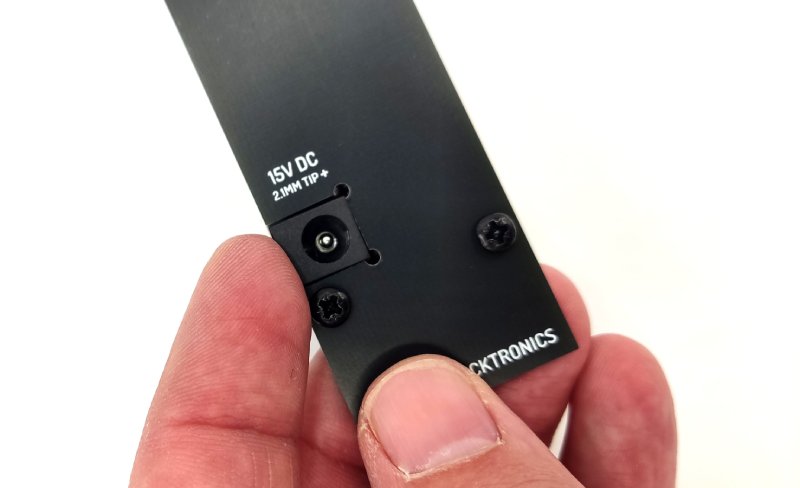
09B Finished!
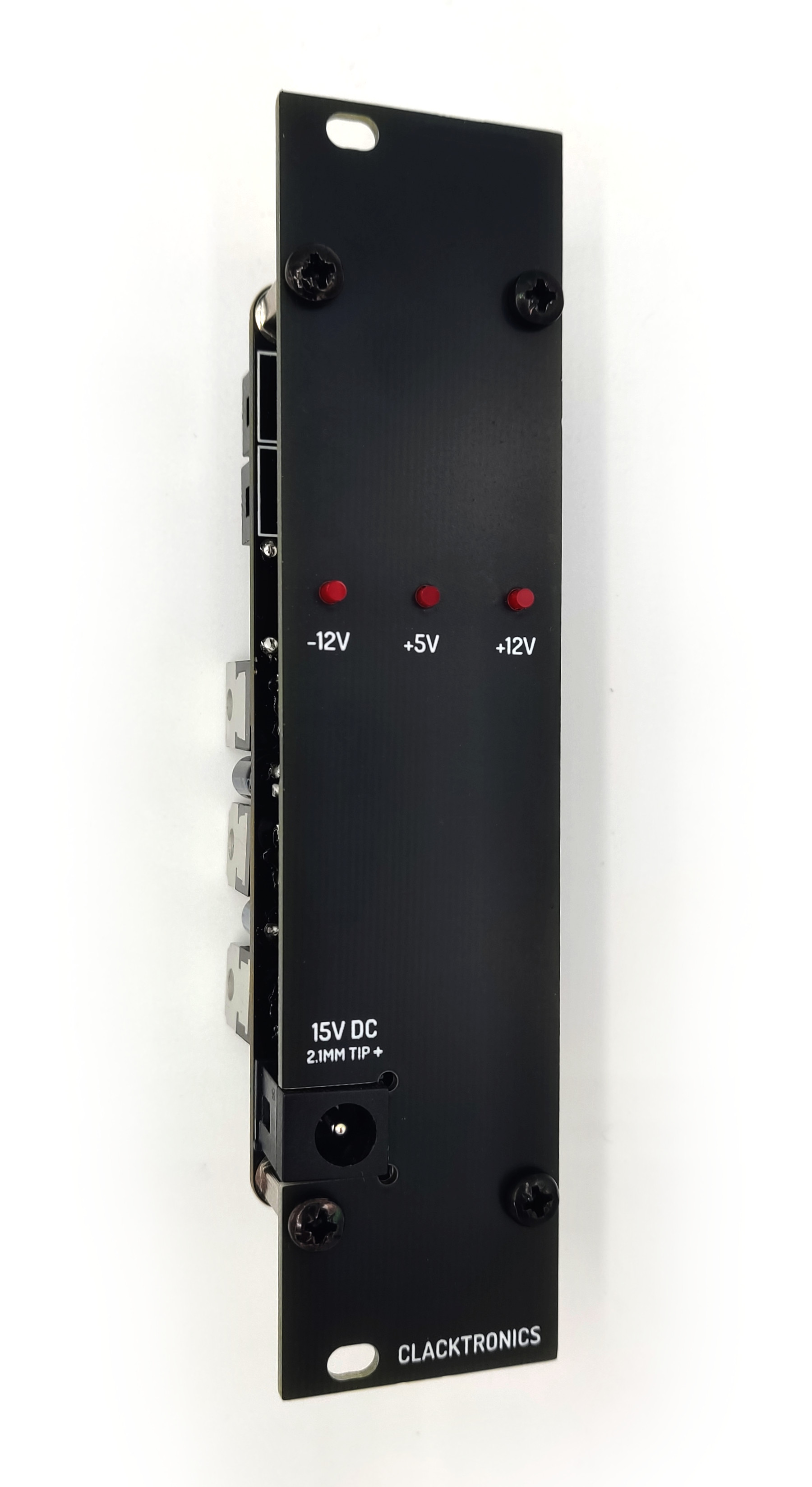
Downloads and Resources
- ibom (right click to save)
- Schematic (right click to save)
- Github page
- Texas Instruments LM7800 series product page
- Texas Instruments LM7900 series product page
- Texas Instruments MC34063 product page
- JPEG front view (796KB)